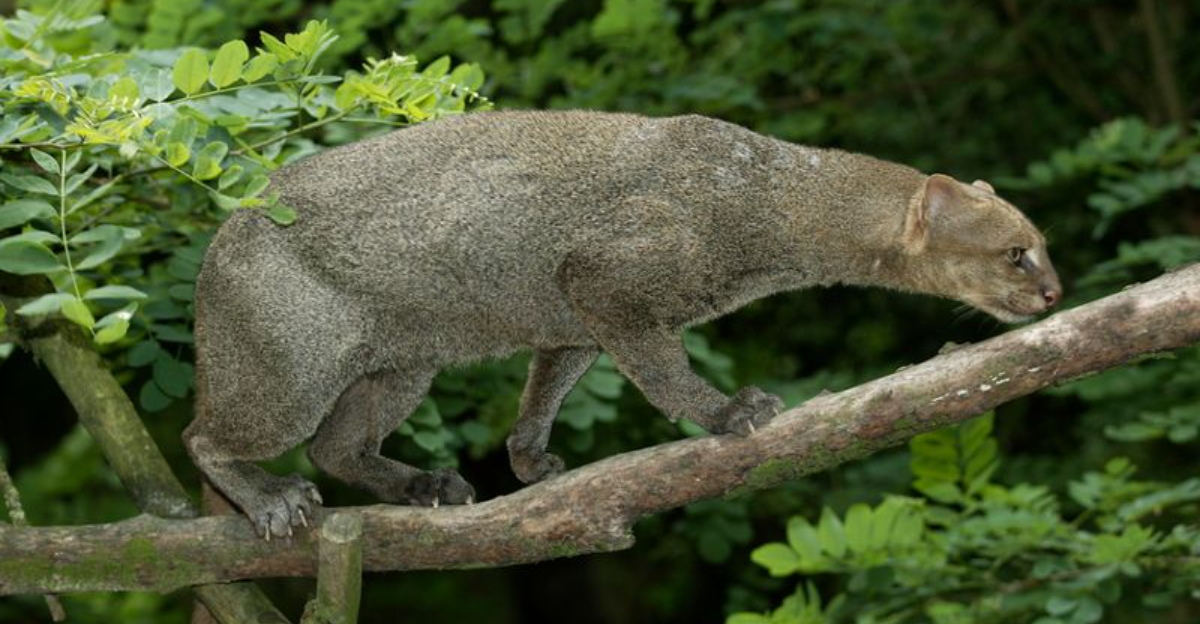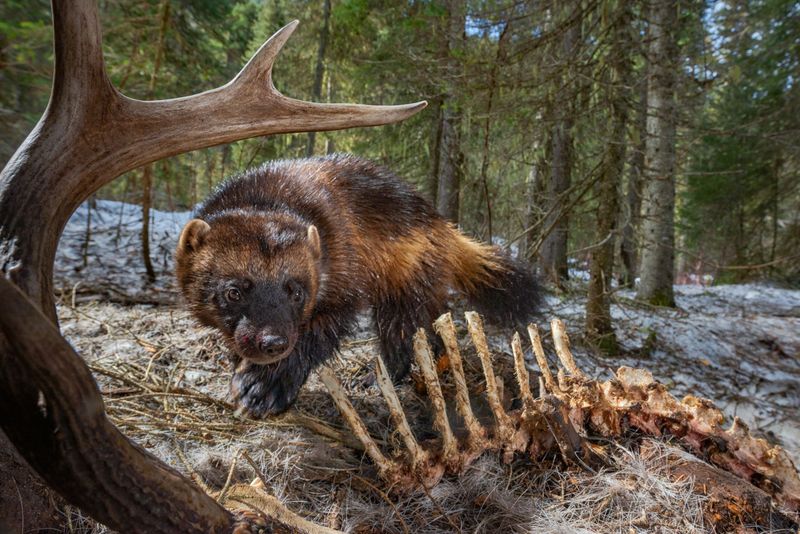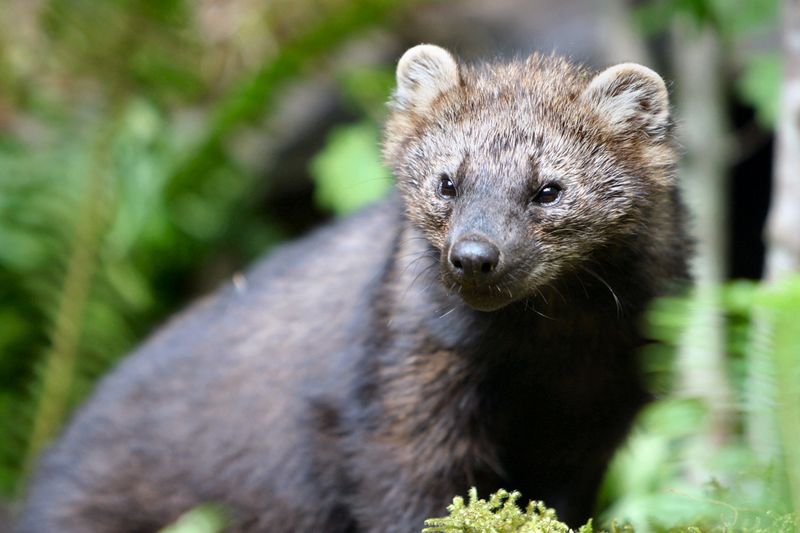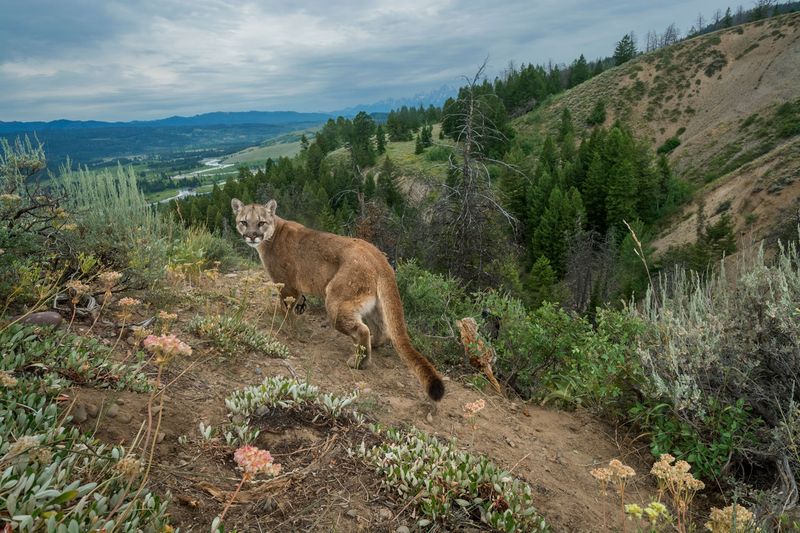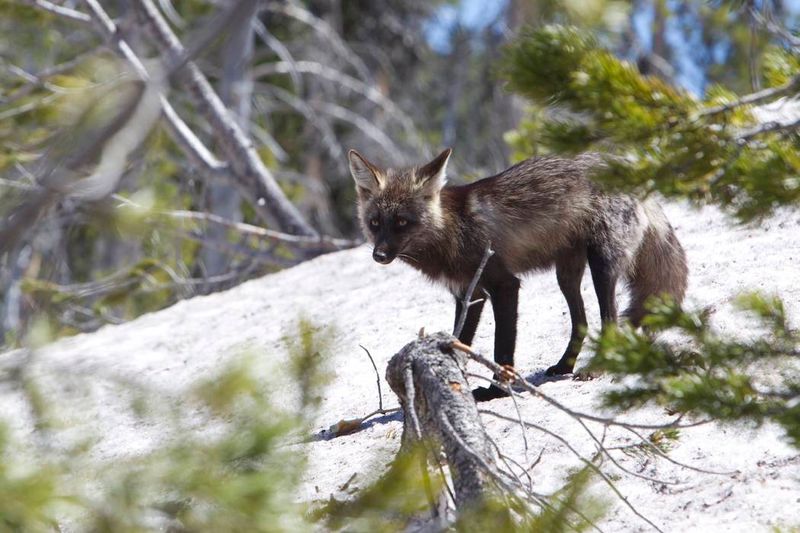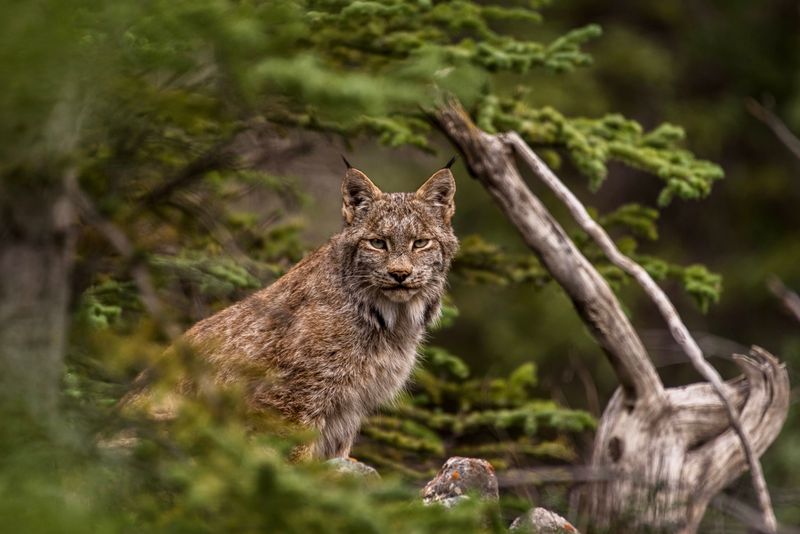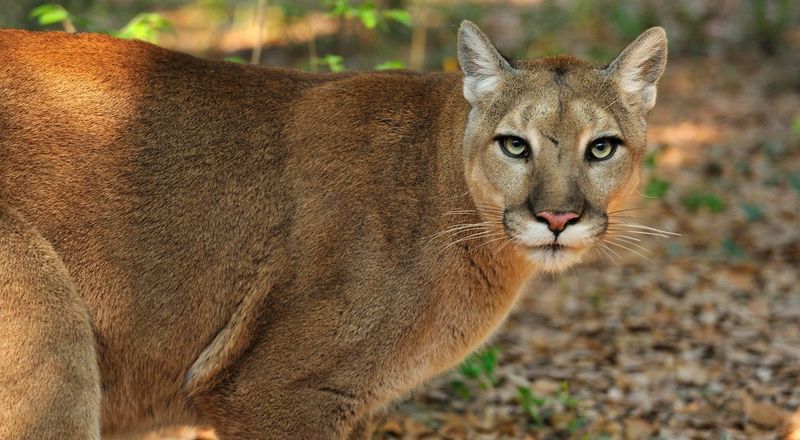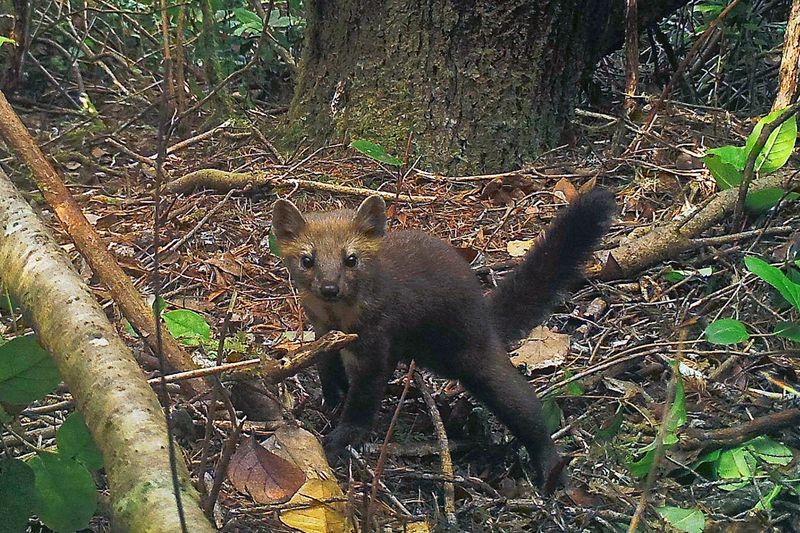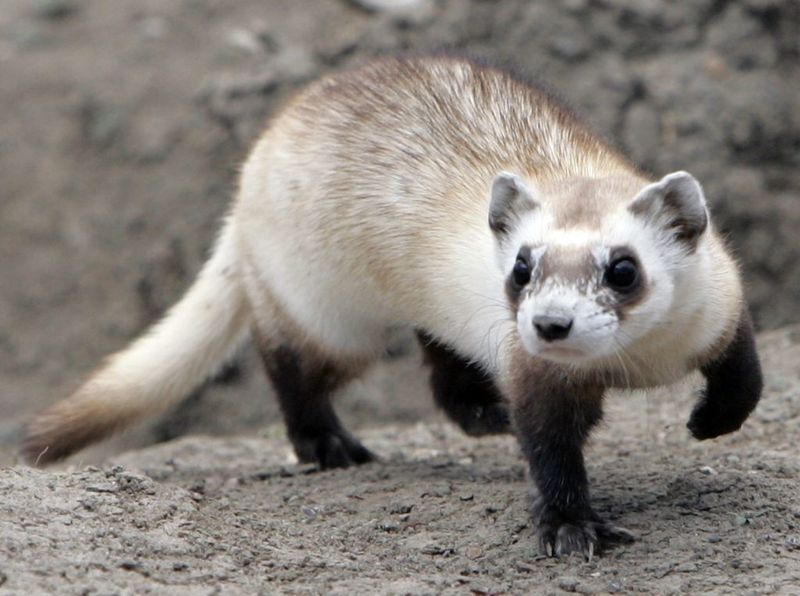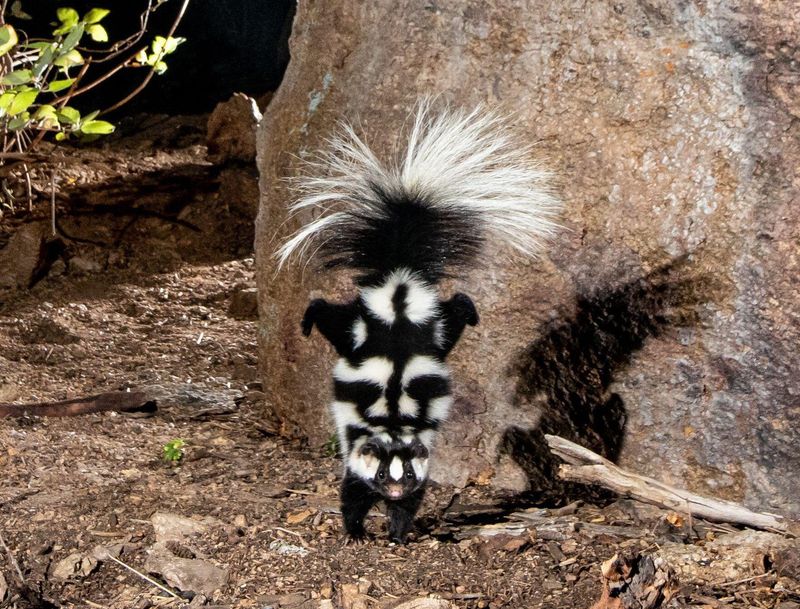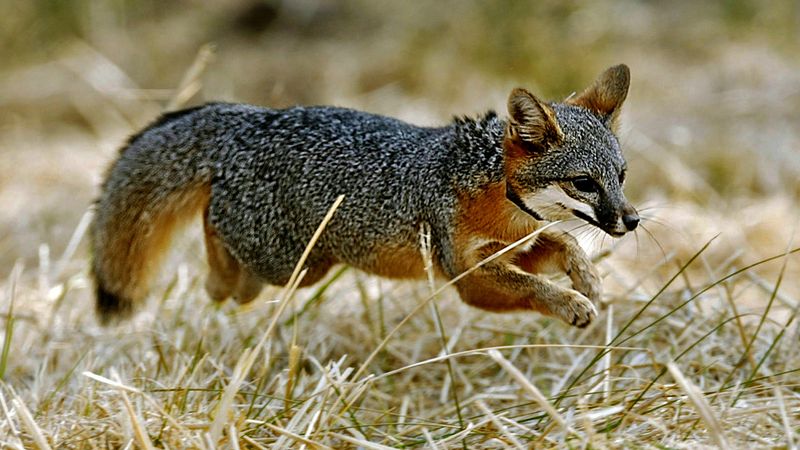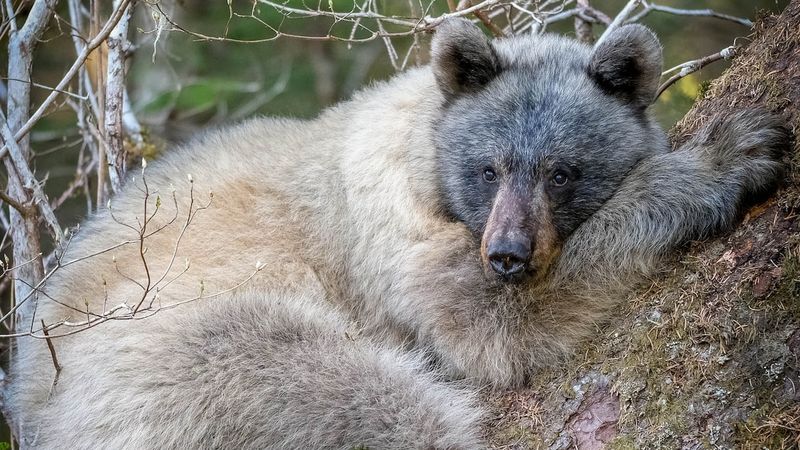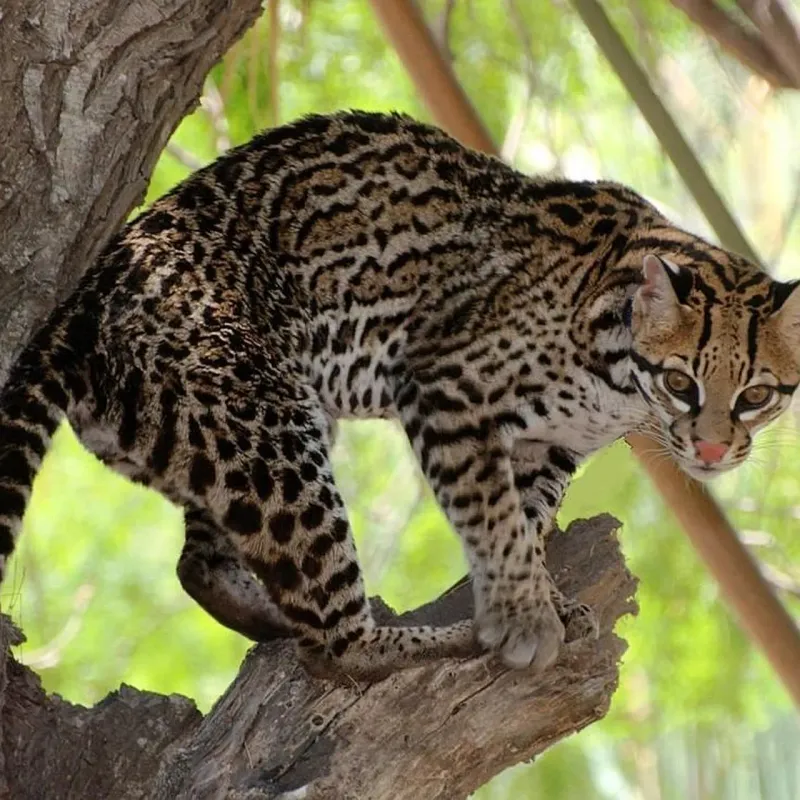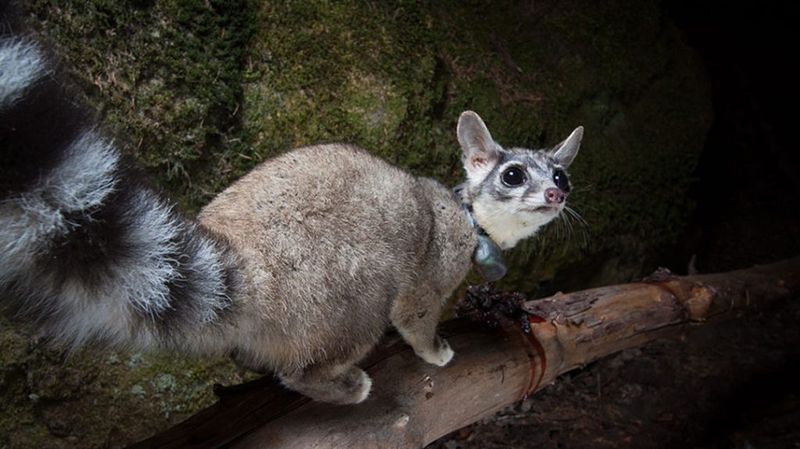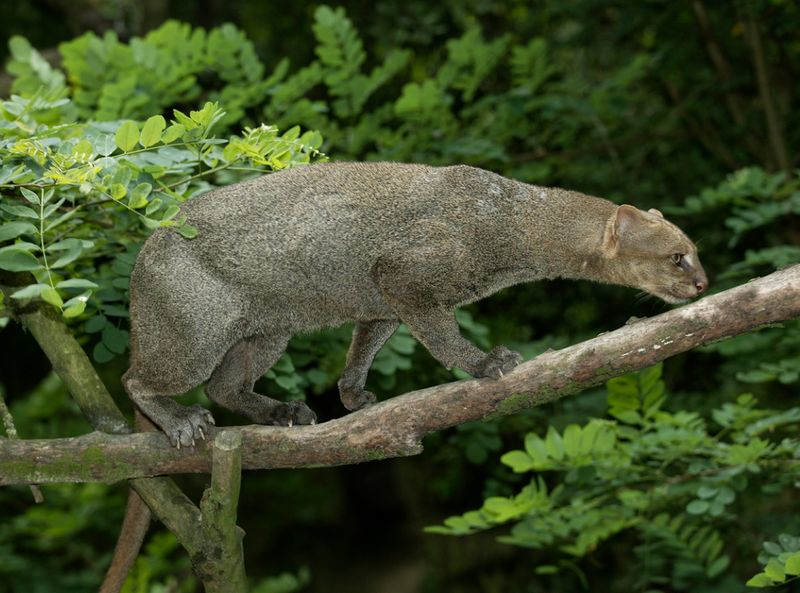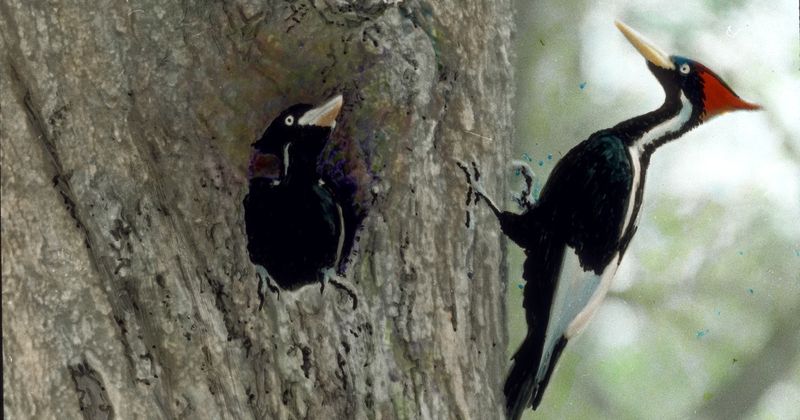📖 Table of Content:
Expansive and untamed, North America’s wild landscapes shelter a range of elusive animal species. These creatures inhabit regions far from human disturbance, thriving in places where few venture. Their survival depends on remaining unseen, blending effortlessly into their surroundings.
Some species are biologically scarce, with limited populations scattered across vast ranges. Others are incredibly skilled at avoiding detection, moving silently through dense forests or rugged terrain. Spotting one in the wild is a rare experience that often leaves a lasting impression.
Elusiveness can serve as both protection and mystery, making these animals all the more fascinating. Their presence hints at the depth of the ecosystems they call home. Knowing they’re out there, even if rarely seen, adds to the wonder of North America’s wilderness.
1. Wolverine
Powerful and fierce, wolverines roam the northern forests and mountains with remarkable stealth. Despite weighing only 20-40 pounds, these muscular members of the weasel family have a legendary reputation for toughness. Wolverines maintain enormous territories, sometimes covering over 500 square miles per individual, making chance encounters extremely rare. Their preference for remote, high-elevation habitats adds to their elusiveness. Scientists estimate fewer than 300 wolverines remain in the contiguous United States. Even dedicated wildlife researchers sometimes spend years without spotting one of these solitary creatures in the wild.
2. Fisher
Related to martens and wolverines, fishers are forest-dwelling mammals with sleek, dark fur and remarkable tree-climbing abilities. Despite their name, they rarely catch fish, preferring to hunt porcupines, squirrels, and other forest creatures. Fishers vanished from much of their historic range due to trapping and forest clearing. Recent reintroduction efforts have helped populations recover in some areas, but spotting one remains a rare event. Primarily nocturnal and extremely wary of humans, fishers leave few signs of their presence. Their ability to travel through forest canopies and preference for dense, mature forests makes them one of North America’s most challenging mammals to observe.
3. Eastern Cougar
Officially declared extinct in 2018, reports of eastern cougar sightings continue to emerge from remote areas. These large cats once roamed throughout eastern North America before habitat loss and hunting decimated their populations. Confusion exists because western cougars occasionally wander east, creating legitimate sightings that fuel belief in resident eastern populations. Their secretive nature and ability to travel vast distances without detection adds to the mystery. Wildlife officials investigate hundreds of reported sightings annually, but confirmed evidence remains extraordinarily rare. Camera traps, track searches, and other monitoring techniques have yet to verify an established breeding population in the eastern United States.
4. Sierra Nevada Red Fox
One of North America’s rarest mammals, the Sierra Nevada red fox clings to existence in small, isolated populations high in California’s mountains. Scientists estimate fewer than 50 individuals remain in the wild. These foxes survive in some of the harshest alpine environments, often above 7,000 feet elevation where few people venture. Their thick fur changes color seasonally, providing year-round camouflage in their high mountain home. Research teams use specialized camera traps baited with scent lures to document these foxes. Despite these efforts, actual sightings remain incredibly rare, with most evidence coming from genetic analysis of scat or occasional photographs from remote cameras.
5. Canada Lynx
Ghostly shadows of the boreal forest, Canada lynx move silently through snow-covered landscapes on oversized, snowshoe-like paws. Their tufted ears and distinctive facial ruff make them instantly recognizable, yet few people ever see one. Lynx populations rise and fall with snowshoe hare cycles, their primary prey. During low hare years, these cats become even more difficult to find as their numbers decrease and territories expand. Masters of camouflage, lynx blend perfectly with winter environments. Their secretive nature and preference for dense forest cover means most encounters happen by sheer chance rather than deliberate tracking.
6. Florida Panther
Florida panthers represent one of the most endangered mammals in North America, with only 120-230 adults remaining in the wild. These magnificent cats survive primarily in the swamps and forests of South Florida, where they maintain large territories. Notoriously shy, panthers avoid human contact whenever possible. Their preference for moving at dawn and dusk further reduces chances of observation. Most panthers now wear tracking collars to help conservation efforts, yet researchers working directly with these animals may go months without visual confirmation. The panther’s incredible stealth serves as both protection and hindrance to recovery. Their ability to remain hidden has helped them survive, but makes monitoring population health and protecting critical habitat challenging.
7. Pacific Marten
Small, agile, and remarkably rare, Pacific martens inhabit old-growth forests along the West Coast. These cat-sized members of the weasel family spend much of their time in trees, hunting squirrels and other small mammals. Coastal martens in Oregon and California have declined to fewer than 400 individuals, split between just four isolated populations. Their dependence on mature forests with complex structure has made them particularly vulnerable to habitat loss. Researchers rely almost entirely on motion-triggered cameras to study these elusive creatures. The chance of a hiker or nature enthusiast spotting a Pacific marten in the wild is extremely low, as they actively avoid areas with human activity and move quickly through their forest domain.
8. Black-footed Ferret
Once declared extinct, black-footed ferrets represent one of America’s most dramatic conservation success stories. Rediscovered in 1981 with just 18 remaining individuals, careful breeding programs have restored small populations to prairie habitats. Spotting these masked prairie hunters requires extraordinary luck. Strictly nocturnal, they spend daylight hours underground in prairie dog burrows. Even dedicated researchers primarily study them using spotlights at night, looking for the distinctive green eyeshine. Despite recovery efforts, fewer than 300 adult ferrets live in the wild across scattered reintroduction sites. Their specialized diet of prairie dogs and underground lifestyle makes them one of North America’s most challenging native species to observe outside of managed recovery areas.
9. Spotted Skunk
Unlike their more common striped cousins, spotted skunks remain mysterious and rarely encountered. These small carnivores perform a unique handstand display when threatened, balancing on front paws while pointing their spray apparatus toward potential threats. Eastern spotted skunks have declined dramatically, with some populations dropping by more than 90% since the 1950s. Western spotted skunks fare somewhat better but remain elusive throughout their range. Primarily nocturnal and exceptionally cautious around humans, spotted skunks leave few signs of their presence. Most scientific documentation comes from trail cameras rather than direct observation, as these small predators have perfected the art of living alongside humans without being seen.
10. Island Fox
Found only on six Channel Islands off the California coast, island foxes evolved in isolation for thousands of years. Each island has its own distinct subspecies, creating one of the most restricted ranges of any North American carnivore. Despite their limited habitat, island foxes remain surprisingly difficult to spot. Their small size—about the same as a house cat—and cautious behavior helps them avoid detection. Populations have recovered from near-extinction in recent decades. Visitors to the Channel Islands might spend days hiking without glimpsing these diminutive foxes. Their crepuscular activity patterns mean they’re most active at dawn and dusk when human presence on the islands is typically minimal.
11. Glacier Bear
Not a separate species but an extremely rare color phase of the black bear, glacier bears display a stunning blue-gray coat that seems to shimmer in certain lights. Found primarily in Southeast Alaska’s coastal regions, particularly near Glacier Bay, these bears exist in very small numbers. The unique coloration results from a genetic mutation affecting hair pigmentation. Scientists believe fewer than 500 glacier bears exist, representing just a tiny fraction of the region’s black bear population. Actual sightings remain extraordinarily uncommon even among locals who spend their lives in bear country. Most photographs come from lucky encounters by wildlife photographers who specifically seek out these ghost-like bears in remote coastal forests.
12. Ocelot
With fewer than 50 wild ocelots remaining in the United States, encountering this spotted wild cat represents one of North America’s rarest wildlife experiences. The last U.S. population survives in small pockets of thornscrub habitat in South Texas. Ocelots rely on dense vegetation for hunting and protection. Their exceptional camouflage makes them nearly invisible among shadows and dappled light. Primarily nocturnal, these medium-sized cats hunt at night when human activity ceases. Conservation efforts include habitat protection and wildlife crossings to reduce road mortality. Despite intensive study using camera traps and tracking collars, direct sightings remain extremely rare even for researchers dedicated to protecting these endangered cats.
13. Ringtail
Often called “ringtail cats” despite being related to raccoons, these fox-faced creatures with spectacular striped tails remain largely unknown to most Americans. Widespread throughout the Southwest, ringtails nevertheless rarely reveal themselves to human observers. Strictly nocturnal and incredibly agile, ringtails can rotate their hind feet 180 degrees, allowing them to descend vertical surfaces headfirst. Their large eyes reflect bright green in flashlight beams, occasionally betraying their presence to night hikers in desert canyons. Ringtails often live surprisingly close to human habitation without detection. Miners and early settlers sometimes kept them as “miner’s cats” to control rodents, yet today most people living within ringtail territory have never seen one in the wild.
14. Jaguarundi
Resembling small cougars rather than typical wild cats, jaguarundis sport unusual elongated bodies and short legs. These medium-sized felines barely maintain a presence in the United States, with only occasional confirmed sightings along the Texas-Mexico border. Unlike most cats, jaguarundis frequently hunt during daylight hours. Despite this unusual habit, their secretive nature and preference for dense brush makes observation extraordinarily difficult. Most confirmed records come from road-killed specimens rather than live sightings. Two color phases exist—a dark charcoal and a reddish-brown form. Their unspotted coats and uniform coloration helps them blend perfectly with shadows in their brushland habitat, making them nearly invisible even when active during daytime hours.
15. Ivory-billed Woodpecker
The “Lord God Bird” represents North America’s most controversial and sought-after species. Officially listed as extinct by the U.S. Fish and Wildlife Service in 2021, debate continues about whether isolated populations might still exist in remote southern swamps. Standing nearly 20 inches tall with distinctive white bills and wing patterns, ivory-bills required vast tracts of mature forest with abundant dead trees. The last universally accepted sighting occurred in 1944, though disputed reports and possible recordings have emerged periodically. Multiple expeditions using sophisticated recording equipment and camera systems have searched potential habitat. Despite these efforts, conclusive evidence remains elusive, making the ivory-bill either North America’s most difficult bird to find or a poignant symbol of extinction.
